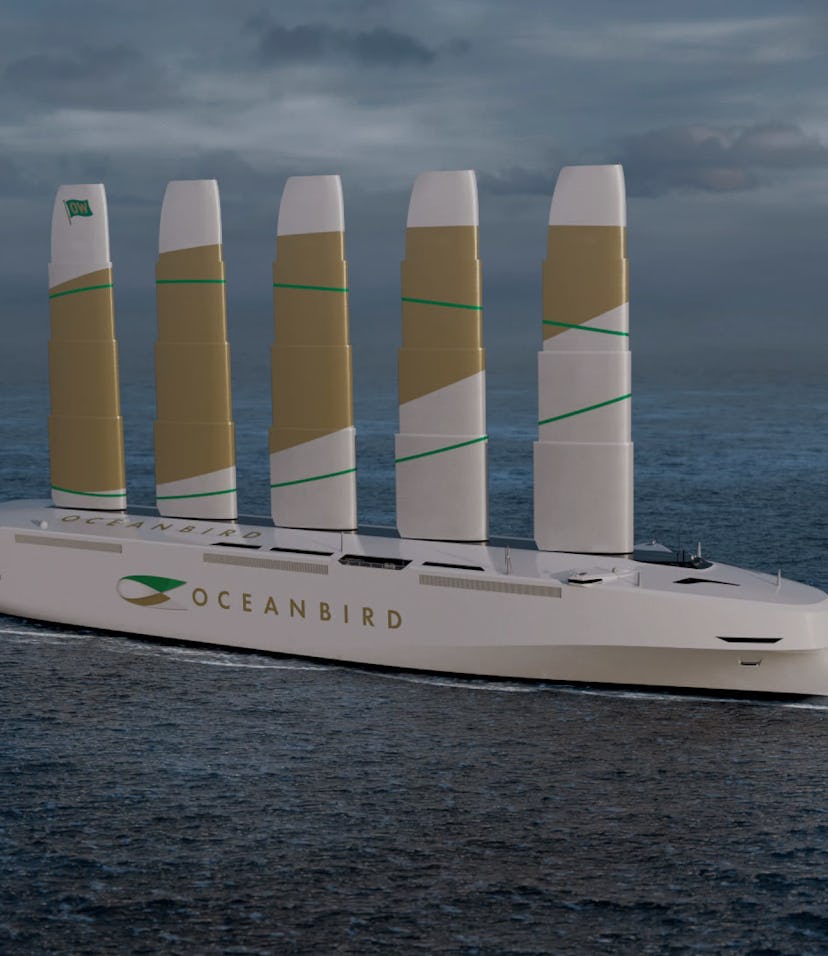Tech
The Oceanbird is a cargo ship powered by giant, modern wind sails
The boat's tall wing sails promise to reduce shipping emissions by as much as 90 percent.

Old school wing sails are mostly used for casual sailing by guys in boat shoes nowadays, rather than for moving large vessels. But what if sails could be used to move cargo ships purely on wind power instead of dirty fossil fuels? That's a concept being explored with the Oceanbird, a ship capable of transporting up to 7,000 cars at a speed of 11mph.
New meets old — The Oceanbird is able to do it using massive, 260-ft high wing sails made from metal. Computer controls change the position of the wings based on the direction of the wind. The system is supposed to reduce emissions by as much as 90 percent.
Boat travel is the most carbon-efficient method of shipping but even still the overall commercial shipping industry contributes 2.5 percent to the world's CO2 emissions, namely because shipping via sea is affordable and carries tons of goods around the world.
Another sustainable ocean-faring concept we've seen is the Energy Observer, a boat powered solely on solar and hydrogen power. That ship generates enough energy to power nine homes per day and has already been tested in the wild. But the purpose of the Energy Observer is simply to promote clean hydrogen fuel rather than be sold for commercial purposes or transport goods.
Cost-benefit analysis — Running on wind power means that the Oceanbird is slow — it's supposed to take about double the time to complete a round-trip as a traditional cargo ship. Also, wind conditions might not exist going in the correct direction to propel the ship where it needs to go. That being said, reducing the huge fuel costs could make a ship like this pencil out.
The ship is intended for car deliveries initially because container ships need a flat surface on top, which the Oceanbird obviously does not have.
The project is being developed in partnership between major shipbuilders including Wallenius Marine, Swedish research institute SSPA, and the Royal Institute of Technology in Stockholm. They're currently testing a 23-ft scale model and hope to have a production-ready design complete in 2021, with deliveries by the end of 2024.